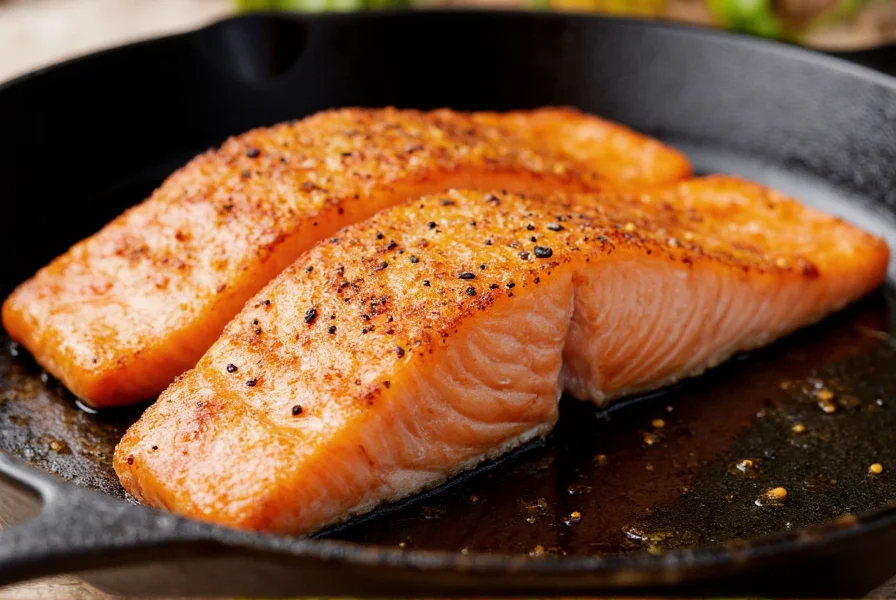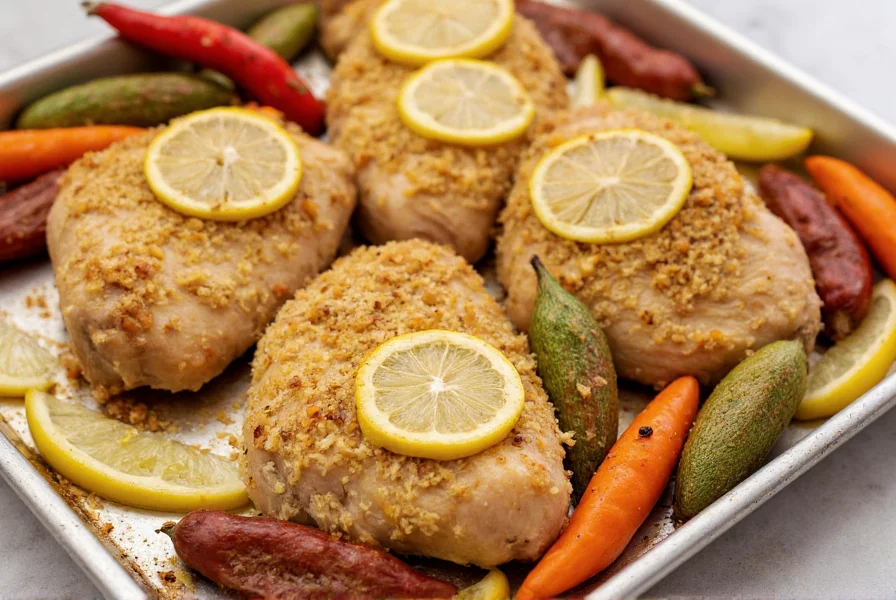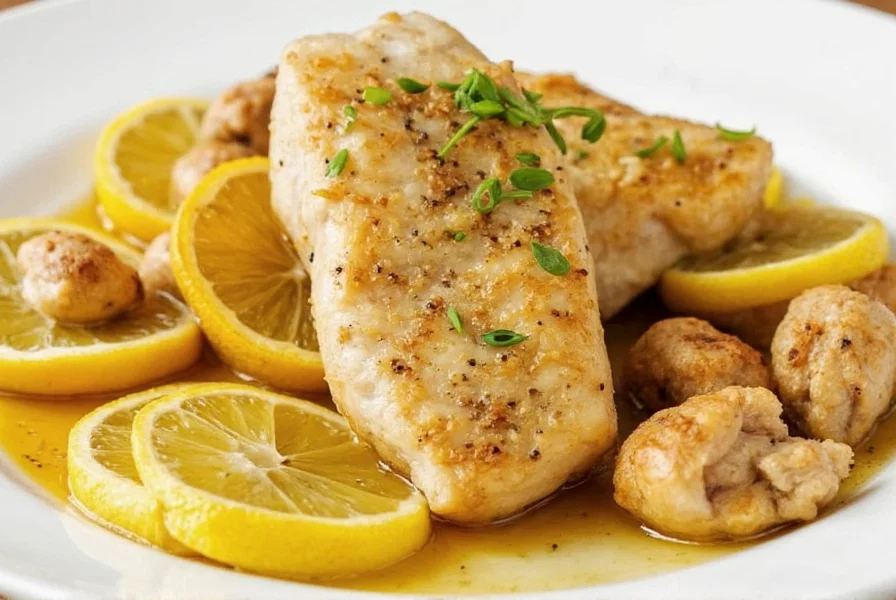Lemon pepper seasoning has become a kitchen staple for good reason. Among various brands, J Lemon Pepper stands out for its balanced citrus-peppery profile that works exceptionally well with delicate proteins. This guide explores science-backed techniques to maximize flavor when using this seasoning on fish and chicken.
Understanding J Lemon Pepper Composition
Unlike generic blends, quality J Lemon Pepper formulations typically contain:
| Primary Ingredient | Percentage | Function |
|---|---|---|
| Citrus zest (lemon/orange) | 35-40% | Provides bright acidity without moisture |
| Cracked black peppercorns | 30-35% | Creates texture and aromatic heat |
| Garlic powder | 15-20% | Enhances savory notes |
| Salt | 10-15% | Flavor conductor and moisture regulator |
The specific grind size in J Lemon Pepper (medium-coarse) allows for better adhesion to proteins compared to fine powders. This texture creates a light crust during cooking rather than burning, which is crucial when preparing healthy lemon pepper chicken cooking methods or delicate fish fillets.
Why Fish Responds Exceptionally to Lemon Pepper
Fish proteins contain natural oils that complement citrus flavors. The science behind this pairing:
- Lemon compounds bind with fish's omega-3 fatty acids, reducing any potential 'fishy' odors
- Peppercorns' piperine enhances perception of umami in white fish varieties
- Acidity helps maintain flakiness by slowing protein denaturation
For best lemon pepper seasoning for fish, apply after patting fillets completely dry. The dry surface allows the seasoning to adhere properly rather than creating a paste with moisture. Wait 15 minutes before cooking to allow salt to begin the osmosis process that seasons beyond the surface.

Optimal Chicken Preparation Techniques
Chicken requires different handling than fish due to its higher fat content and density. For how to use lemon pepper on chicken breasts:
- Brine chicken in 1/4 cup salt dissolved in 4 cups water for 30 minutes
- Dry thoroughly with paper towels
- Apply J Lemon Pepper generously, pressing gently to adhere
- Rest 20 minutes at room temperature before cooking
This process ensures deep flavor penetration while maintaining moisture. The salt in the seasoning works with the brine to create uniform seasoning throughout the meat, not just on the surface. For bone-in pieces, increase resting time to 30 minutes.
Recipe Applications and Cooking Methods
Different cooking techniques yield distinct results with j lemon pepper seasoning ingredients:
For Fish
- Pan-searing: Use oil with high smoke point (avocado or grapeseed). Cook 3-4 minutes per side for 1-inch fillets
- Baking: 400°F for 12-15 minutes. Add lemon slices on top during last 5 minutes
- Grilling: Direct heat for 2-3 minutes per side. Use foil packet for delicate fish
For Chicken
- Oven-roasting: 375°F until internal temperature reaches 165°F (approx. 25-30 minutes for breasts)
- Grilling: Medium-high heat, 6-7 minutes per side with lid closed
- Skillet cooking: Sear 5 minutes per side, finish in 375°F oven for 10 minutes

Avoiding Common Mistakes
Even with quality lemon pepper fish recipe simple instructions, these errors undermine results:
- Applying seasoning too early: More than 30 minutes before cooking can draw out moisture
- Using wet ingredients first: Never apply lemon juice before dry seasoning - creates paste
- Overcrowding the pan: Causes steaming instead of searing the healthy lemon pepper chicken
- Not adjusting for salt content: Reduce additional salt if your J Lemon Pepper contains it
For optimal results with baking fish with lemon pepper tips, place fish on a wire rack over a baking sheet. This allows hot air circulation for even cooking and prevents the bottom from becoming soggy.
Storage and Freshness Tips
To maintain peak flavor in your J Lemon Pepper:
- Store in airtight container away from light and heat
- Use within 6 months for maximum citrus brightness
- Never store above the stove or near dishwasher
- Check for faded color or diminished aroma as freshness indicators
Freshly ground peppercorns and vibrant citrus notes distinguish quality blends. If your j lemon pepper seasoning ingredients have lost their aroma, it's time to replace the container.
Conclusion
Mastering J Lemon Pepper application transforms simple proteins into restaurant-quality dishes. The key is understanding how its components interact with fish and chicken at a molecular level. By following these science-based techniques for grilling chicken with lemon pepper instructions and delicate fish preparation, home cooks can consistently achieve professional results. Remember that proper timing, surface preparation, and cooking method selection make the difference between good and exceptional lemon pepper seasoned proteins.
Frequently Asked Questions
Can I use J Lemon Pepper on frozen fish without thawing?
No, applying seasoning to frozen fish creates excess moisture during cooking, preventing proper crust formation. Always thaw fish completely and pat dry before seasoning for optimal results with lemon pepper fish recipes.
How much J Lemon Pepper should I use per pound of chicken?
Use 1 to 1.5 teaspoons of J Lemon Pepper per pound of chicken. For thicker cuts like bone-in thighs, increase to 2 teaspoons. Always apply after drying the surface and allow 15-20 minutes for the seasoning to adhere before cooking.
Does J Lemon Pepper contain MSG or artificial ingredients?
Most quality J Lemon Pepper blends contain only natural ingredients: citrus zest, cracked pepper, garlic powder, and salt. Always check the label, as some budget brands may include anti-caking agents or flavor enhancers. For clean eating, choose blends with five or fewer ingredients.
Can I make my own J Lemon Pepper blend at home?
Yes, combine 2 tablespoons lemon zest, 1.5 tablespoons coarsely ground black pepper, 1 tablespoon garlic powder, and 1 tablespoon fine sea salt. For best results mimicking commercial J Lemon Pepper, use a microplane for zest and freshly cracked pepper for optimal flavor release.
What temperature indicates perfectly cooked lemon pepper chicken?
Chicken should reach 165°F (74°C) at the thickest part when measured with an instant-read thermometer. For best texture, remove from heat at 160°F as carryover cooking will bring it to the safe temperature while maintaining juiciness in your lemon pepper chicken preparation.











 浙公网安备
33010002000092号
浙公网安备
33010002000092号 浙B2-20120091-4
浙B2-20120091-4